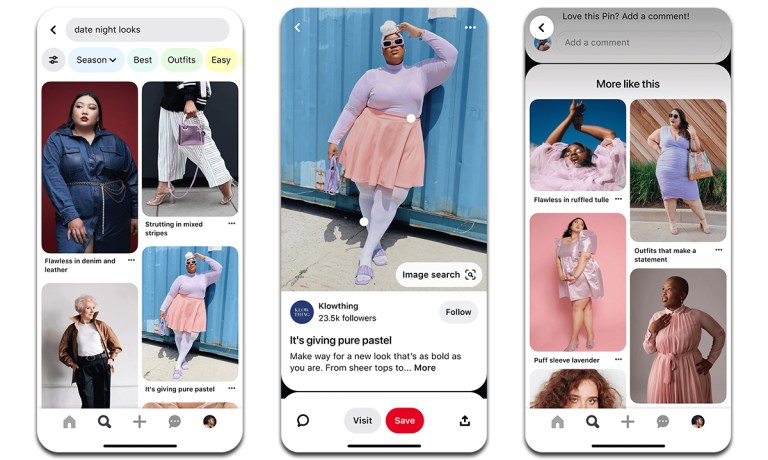
From fashion to advertising and beyond, companies increasingly recognize the importance of representing a diverse range of body types, skin tones and backgrounds in their marketing and products. This shift toward inclusivity is a response to societal changes and a strategic move to engage a wider consumer audience.
One of the most compelling reasons for embracing inclusivity in marketing and product design is the desire to reflect on the real world. Consumers appreciate brands that mirror their own lived experiences, making them more likely to engage with and support these businesses.
Inclusivity fosters relatability and empathy. When consumers see people who look like them or who share their experiences represented in advertising and media, it creates an immediate connection. This connection promotes brand loyalty and encourages consumers to believe that the brand values them as individuals.
Furthermore, diversity sells.
Inclusivity tactics open the doors to previously untapped markets and demographics. When a brand makes a conscious effort to cater to a wider range of body types and skin tones, they inherently broaden their potential customer base. This broader appeal can lead to increased sales and revenue as more people feel that the brand speaks to them and their needs.
Macy’s and Nike are just two of the many retailers that have taken notice.
Macy’s inclusivity approach includes ditching the one-size-fits-all approach to clothing fit for women and has launched “On 34th,” a clothing line that accommodates a wide range of sizes, from XXS to 4X and 0 to 26W.
Nike also looked to inclusivity by going genderless. Nike and menswear designer Martine Rose reportedly collaborated on a genderless tailoring collection embraced on and off the field by players who participated in the FIFA Women’s World Cup.
“It’s a first for Nike to do tailoring, and that in itself is really exciting, and a privilege to have done,” Rose told WWD.
Read more: Macy’s, Nike Launch Inclusive Fits for Decreased Returns
Now, Pinterest is looking to enhance its inclusivity initiatives to attract a broader range of Pinterest users and advertisers, similar to companies such as Macy’s and Nike, to join the platform.
Pinterest unveiled its body-type technology this week, a new feature that adjusts its algorithms internally to enhance the visibility of plus-size bodies in women’s fashion and wedding-related content on the platform.
Incorporating body-type technology enhances the current skin tone technology, improving the representation of BIPOC plus-size individuals in search results, regardless of whether a Pinterest user is explicitly searching for BIPOC or plus-size individuals.
“We’re attempting to increase representation by building this proprietary, inclusive technology that powers recommendations and … to create a diverse experience on Pinterest,” Annie Ta, head of inclusive products at Pinterest told Glossy. “We’ve learned from our users that, if you identify as a plus-size woman, you don’t only want to see plus-size fashion. And you want to see that plus-size women can be fashionable when you’re looking [for it], but you don’t want to work extra hard to find it.”
Pinterest’s emphasis on body-type technology originated from user feedback. Users pointed out that they often had to make multiple adjustments to their search queries to obtain relevant results. For instance, they had to search for “plus size fall fashion” instead of “curvy outfits for fall.” In fact, 52% of the supplementary terms added to fashion searches were related to plus size.
In essence, this technology broadens the spectrum of individuals who can attain visibility on social media. The objective is that as user experiences improve, Pinterest will witness heightened user engagement and extended user sessions, thereby becoming a more attractive platform for advertisers.
Pinterest has verified that enhancing inclusivity in its content directly results in higher user engagement. Recent experiments conducted by Pinterest have demonstrated that a shift towards more inspirational and inclusive content significantly boosts its relevance, engagement and overall user satisfaction.
As per the company’s most recent earnings report published at the beginning of August, its revenue for the second quarter of 2023 saw a 6% year-over-year (YoY) growth, reaching $708 million. Furthermore, its global monthly active users (MAUs) experienced an 8% YoY increase, reaching 465 million. Pinterest anticipates its third-quarter revenue will continue to grow within the high single-digit range compared to the previous year.
The company also revealed that Pinterest is becoming a shopping destination.
“Shopping is working on Pinterest, and we’ve had some great partnerships that are aiding that,” Ready said in a interview Tuesday with Yahoo Finance. “There’ll be more of those to go.”
Read also: Pinterest Says Interest in Shoppable Posts Jumped By 50%
For all PYMNTS retail coverage, subscribe to the daily Retail Newsletter.